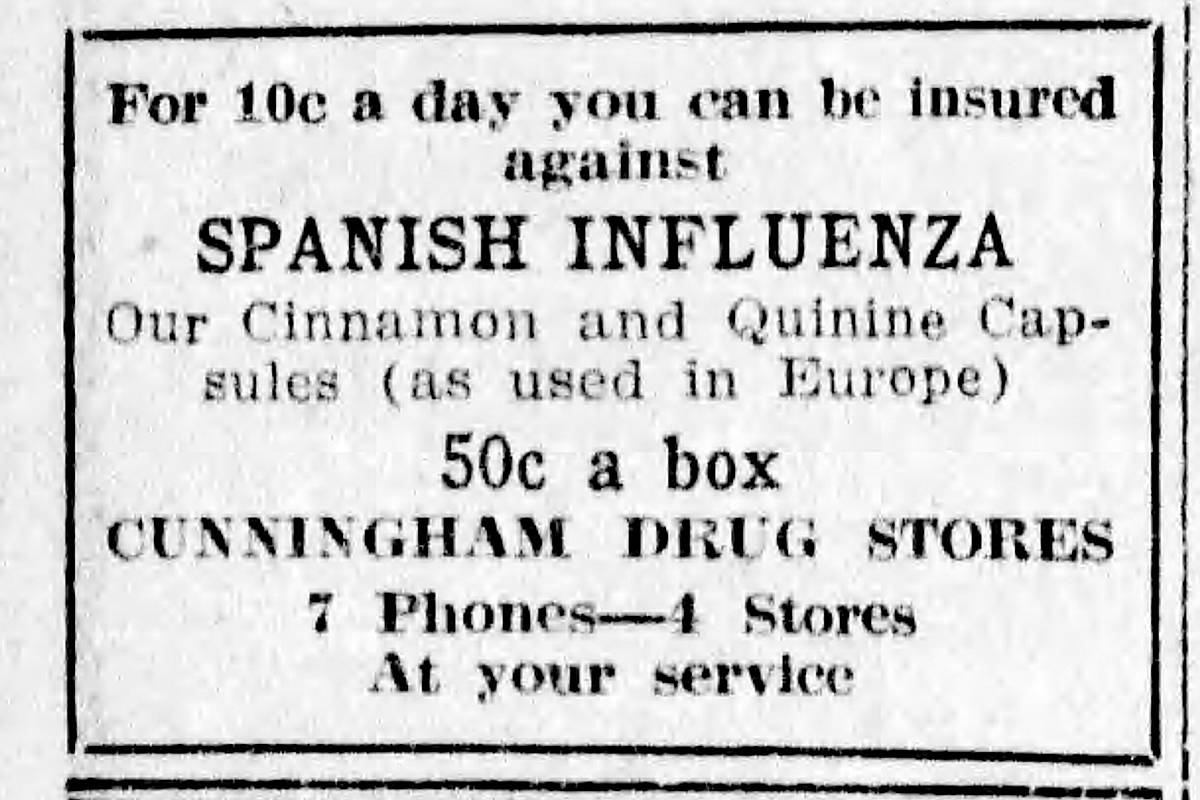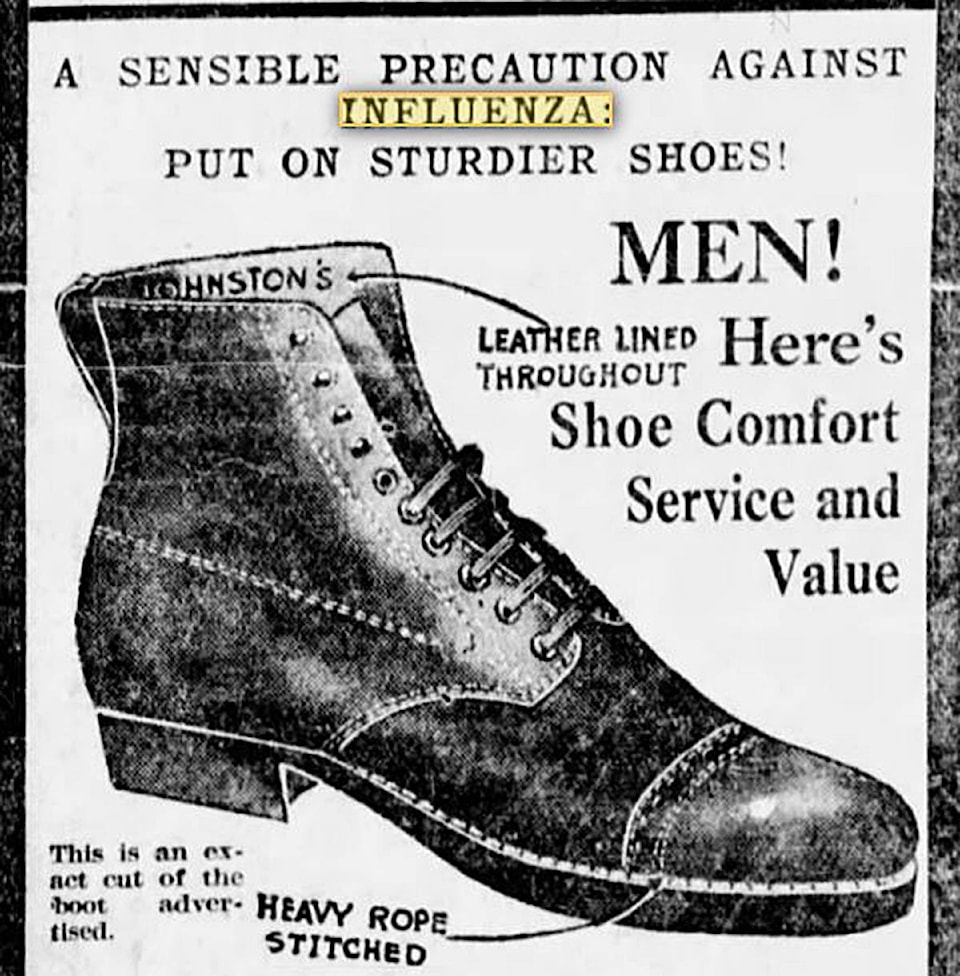By Val Patenaude/Special to The News
The last episode of worldwide quarantine was in 1918, a little more than 100 years ago.
We did not have a local newspaper at the time but those of surrounding communities published reports from an expanding circle of communities, as everything shut down.
A Province article from Oct. 16, 1918 claims “Royal City to be Closed Up Tight.”
The article goes on: “Schools, theatres, churches, and all public meetings will be closed and semi-public functions, such as dances and whist drives, will also be forbidden. The rapid spread of Spanish ‘flu’ has caused this drastic order.
“Yesterday morning only 12 cases were reported. Today there are 50 cases, with 11 of these isolated in the Royal Columbian Hospital.”
A few days later, on Oct. 19, the Province published ‘Flu notes from Port Haney,’ which included school closures, cancellation of activities by various groups, and reports of serious illness within families, some of those with recently returned soldiers.
In Chilliwack, on Nov. 7, 1918, the reeve posted an order that all schools, churches, theatres, poolrooms, and public auctions be closed. Further, “all public meetings are forbidden until further notice.”
All cases of influenza were to be immediately reported to the health officer for the city. Failure to report had heavy penalties including incarceration and in the case of deaths, interment had to happen within 24 hours.
The instructions to the populace could have come from any newspaper today – wash your hands, disinfect surfaces, and isolate.
The big difference is that they were more familiar orders in those days.
RECENT COLUMN: Maple Ridge bids adieu to its Trail Boss
They were in the time before vaccinations were common and antibiotics were few and weak.
There was nothing to help with viruses.
Treatment was limited to flushing nasal passages with salt water and applying chest poultices.
Quarantine was the only approach to stop contagious diseases in their tracks.
Gloria Morrisette, a local writer for the Haney Gazette newspaper, told her husband’s story with the First World War and the flu.
It hit towards the end of the war, when everyone was exhausted already. Murray Morrisette was assigned to look after a narrow gauge railway running between a large camp in France and the battle front to keep the line intact despite constant bombing. It was in this setting that the flu epidemic first struck.
Murray survived his case of the flu with lifelong health consequences, but many of his friends did not. It was soldiers –desperate to return home after war to loved ones equally desperate to see them – that fueled the pandemic.
A pandemic is not exactly slow-moving, but – then as now – the people of Maple Ridge could see it coming and took protective measures that greatly reduced the number of deaths locally.
There are few deaths recorded for Maple Ridge in late 1918, but that is mostly due to the nearest hospital being in New Westminster – where deaths spiked.
In the absence of the internet, the snake oil salesmen were busy selling quack cures and re-purposing existing compounds as flu fighters.
In addition to pills and ointments, sellers of other goods suffering from the economic consequences tried to get in on the act, as apparent with one ad from the Province of Oct. 29 suggesting that people buying a new pair of sturdy boots would help protect one from the flu.
Stick with the tried and true.
The elements of self-isolation and quarantine are in place, and have served us well ever since Maple Ridge became a place.
Stay safe and stay home!
ANOTHER COLUMN: Sunday shopping starts in Maple Ridge
– Val Patenaude is director at the Maple Ridge Museum and Archives
• If there is more to this story, please let us know about it. Email us at editor@mapleridgenews.com. We look forward to hearing from you. In the meantime, like us on Facebook or follow us on Twitter.

